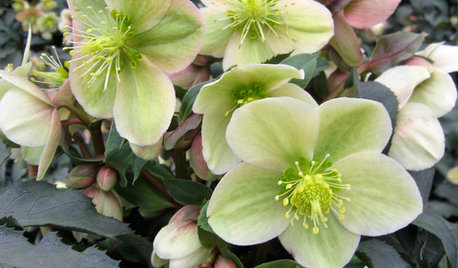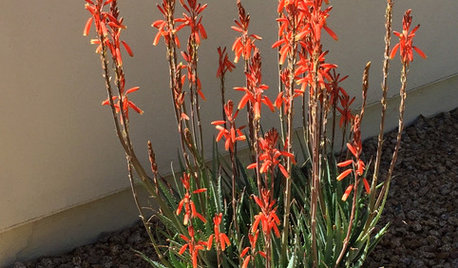Hybrid F1, Hybrid F2, Heirloom
curly77
16 years ago
Related Stories

MAN SPACESA Los Angeles Basement Becomes a Cozy Man Cave
Raw storage space in a Hollywood writer's home is transformed into a masculine home office hybrid
Full Story
WINTER GARDENINGGreat Design Plant: Gold Collection Hellebores Perform Like Stars
Exciting colors, longer bloom times, forward-facing flowers ... These hybrids leave old hellebores in the dust
Full Story
HOMES AROUND THE WORLDEast Meets West in 3 Modern Japanese Homes
Contemporary Japanese houses often mix traditional and Western elements. These hybrids offer the best of both worlds
Full Story
KITCHEN DESIGNTake a Seat at the New Kitchen-Table Island
Hybrid kitchen islands swap storage for a table-like look and more seating
Full Story
GARDENING GUIDESGreat Design Plant: Aloe ‘Blue Elf’
This compact, sun-loving aloe hybrid thrives where many aloes don’t
Full Story
RUSTIC STYLEHouzz Tour: A Modern Ranch Shines in the Alberta Foothills
A mix of family heirlooms, rustic details and Scandinavian style infuses a family’s weekend home in Canada
Full Story
EDIBLE GARDENSSummer Crops: How to Grow Tomatoes
Plant tomato seedlings in spring for one of the best tastes of summer, fresh from your backyard
Full Story
HOME TECHPlug Into Home Power Monitors That Pay for Themselves
Stop throwing away money on wasted electricity with help from new monitors that work with your phone or computer
Full Story
EDIBLE GARDENSSummer Crop: How to Grow Blueberries
Plant blueberries in spring or fall for garden beauty through three seasons — and a sweet superfood in summer
Full Story
FRUIT TREESHow to Grow Your Own Juicy Plums
Easier than other stone fruits and with a variety of colors to choose from, plums are a versatile garden addition
Full Story


kimcoco
trudi_d
Related Discussions
Understanding hybrids and f1s
Q
Why you shouldn't buy F1 hybrids
Q
Found this article in NJ Paper CourierPost Ramapo F-1 Hybrid
Q
Hybrid F1 vs F2 Seed from Seed Sellers?
Q
HoosierCheroKee
korney19
t_bred
trudi_d
korney19
carolyn137
curly77Original Author
pennyrile
carolyn137
trudi_d
farkee
carolyn137
curly77Original Author
carolyn137
t_bred
tuffpansy
buckeye_brian
HoosierCheroKee